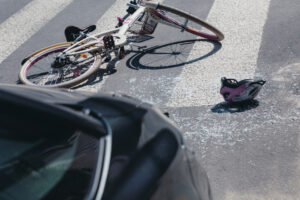The Doctors and nurses treating passengers of Asiana flight 214, which crash landed at the San Francisco Airport earlier this month, are now considering how seat belt design may have played a role in the injuries suffered by the passengers.
As of last week, 16 of the flight’s 307 passengers remained hospitalized, with four in critical condition. Of the passengers, three were killed, at least one of whom died due to an accident involving a firetruck responding to the scene.
As medical professionals began treating the wounded, they noted similar injuries amongst the victims, all associated with lap fastening seat belts. Although airline seat belts do prevent people from being ejected from their seats, they may also cause injuries to the abdomen in crash situations.
Although lap belts are common in most classes of airlines, the Asiana jet equipped its business class section with upgraded chest harnesses as well as lap belts. One passenger seated in business class noted that the chest harness prevented him from being seriously injured by not allowing his head to slam violently into the seat in front of him.
Dr. Kondrashov, of St. Mary’s Medical Center in San Francisco, discussed the dangers of having lap only seat belts installed in airplanes, noting one crash victim who suffered a blow to the head which “dissipated across his neck, and (that’s why he) sustained a very unstable fracture of his cervical spine.”
Few airlines have chest harness options, typically used only in pilot, crew, and first class seating where the passenger can lie flat or in a bed pod. A spokeswoman for the Korean airline stated that chest harnesses were not used throughout the plane as the seats in the coach areas are padded to help reduce injuries if a passenger’s head slams forward.
Although there are no assurances that wearing a chest harness would have prevented all injury, it may have changed the extreme nature of the injuries sustained during the crash.
As a product defect attorney, I often look at how certain products could have performed better in crash situations. I believe the key is to balance the cost of improving the safety of a product with the risk of injury if the product is not improved. Isn’t it strange that the seatbelts we put on in coach seats are the same basic design and structure as those we used decades ago? And weren’t car seatbelts just lap belts in the early sixties? Well, car seatbelts have evolved so why haven’t the seatbelts in airplanes? Is it because when a plane crashes, the passengers are usually killed anyway? Would shoulder harnesses have reduced the injuries in this San Francisco jet crash? And should the shoulder harnesses have been available in coach?
Hello, I’m Claude Wyle. Have an idea for a topic you’d like to see covered here? Feel free to contact me: cwyle@ccwlawyers.com or visit www.ccwlawyers.com.

Claude A. Wyle is a partner of Choulos Choulos, and Wyle, a San Francisco based law firm dedicated to representing clients who have been injured by the wrongful conduct of individuals, corporations, public entities, and businesses. Mr. Wyle also frequently sits as a Judge Pro Tem for the city and county of San Francisco.










Comments for this article are closed.